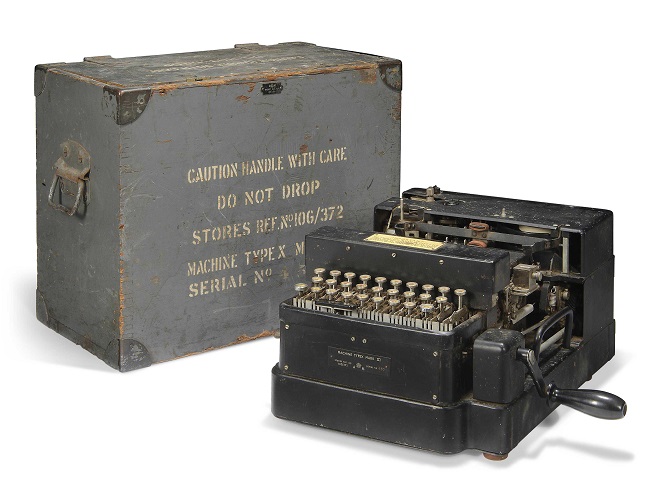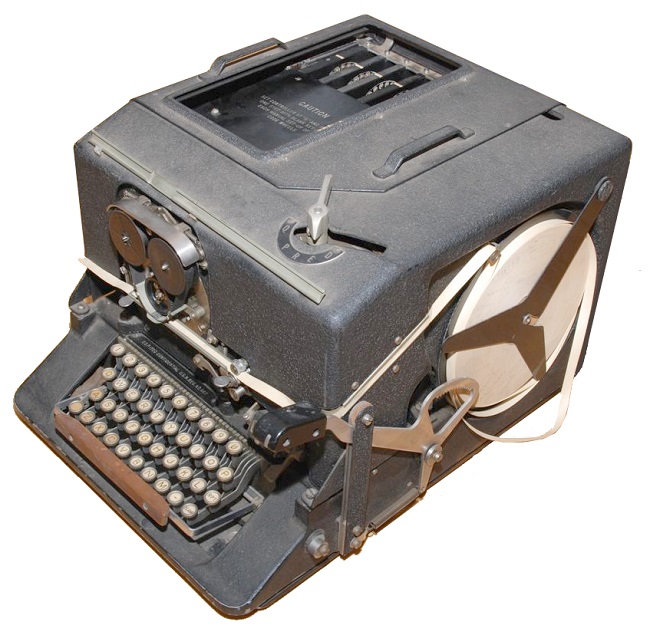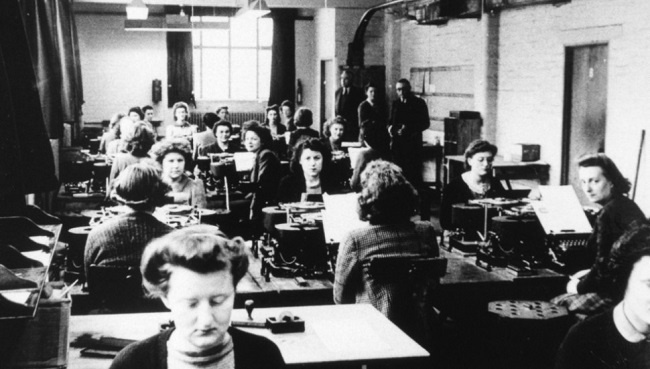The Enigma machine, created by the Germans, is well-known for being a type of electro-mechanical rotational device used to encrypt messages during World War II. The British used a similar machine called Type X, while the Americans developed a more complex encryption machine called SIGABA. The Japanese also had an encryption device, referred to as PURPLE by the United States, which was successfully deciphered in 1942. Despite the complexity and frequent updates of the encryption systems utilized by these machines, it was widely believed that breaking the code was impossible due to the large number of calculations required. The machines were sending new signals every day, every hour, or even every minute.
The Ciphers of World War II
Although the encryption machines were overall invincible, it was not uncommon for a weakness to appear due to mistakes made by people or due to a lack of effort. This is also evident in the story of how the Enigma code was broken. The information obtained through decoding Enigma was referred to as “ULTRA” and, similar to the Zimmermann Telegram, the concern with “ULTRA” intelligence was how long it could remain undetected by the Germans before they realized their confidential codes had been deciphered and read.
- Type X Mark III

This code breaker was created for use in the field and did not require electricity to function. To use it, the tape roll was swapped out depending on whether the message was encrypted or unencrypted, and the hand lever was used to turn the rotating cipher discs.
- SIGABA

This cipher, known as the Combined Cipher Machine (CCM) system, was a more advanced version than Type X. It was used for encrypting messages starting in 1943.
However, the machine was too large and heavy to be used in battle. It utilized three sets of five coded rotor discs in its encryption process, but did not have any reflectors.
Bletchley Park and Women Codebreakers

This courthouse located in Buckinghamshire, England played a significant role in the effort to decrypt the Enigma code and other codes used by the enemy during the war. In 1939, it became the headquarters of the newly established Government Code and Cypher School, which replaced Room 40 as the British decryption center. The courthouse was home to a diverse group of cryptographers, mathematicians, scientists, historians, linguists, and researchers during the war.
They were supported by a team of hand-picked Army printers, secretaries, and communications officers. To promote teamwork and collaboration, the group would organize rounders and tennis matches.
The team’s responsibilities included not only breaking the Enigma code, but also deciphering codes used by the German Navy, Italian, and Japanese.
Codenames of the Manhattan Project

During the war, the United States, with the aid of the United Kingdom, embarked on a highly classified initiative to swiftly develop a nuclear “device.” This effort, known as the “Manhattan” project, was led by a team of scientists from multiple countries and overseen by American physicist J. Robert Oppenheimer. The project was named after the U.
S. Army Corps of Engineers’ Manhattan Engineers District in New York City, and its top-secret operations took place in the Sangre de Cristo mountains of New Mexico, using codenames such as:
- 509th Composite Group
This group, utilizing the B-29 Superfortress aircraft, served as the bomber wing for the Manhattan Project.
- Alberta
The individuals on the team put together the explosive devices on Tinian Island, located in the Pacific region.
- Alsos
Allied operations that were kept confidential were carried out in regions of Europe that were under occupation in order to abduct nuclear experts and materials like uranium. These missions were limited to only three.
- Bockscar
On August 9, 1945, the plane released the atomic bomb on Nagasaki.
- Box 1663
The Santa Fe postal code was utilized by everyone who was involved in the project.
- Enola Gay
The first atomic bomb was released from an aircraft on the city of Hiroshima on August 6, 1945. The bomb was named after the mother of the plane’s pilot, Lieutenant Paul Tibbets.
- Fat Man
The atomic bomb was set off in Nagasaki on August 9, 1945.
- Fission
This phrase, which was first used by Otto Frisch, refers to the process of splitting atoms by bombarding them with neutrons.
- Gadgets
A general phrase utilized by officials from Los Alamos for the nuclear weapons that they have manufactured.
- Little Boy
On August 6, 1945, the atomic bomb was dropped on Hiroshima.
- Site-Y
Los Alamos Laboratory, which the local residents refer to as “the peak.”
- Trinity
The site of the first nuclear test was carried out on July 16, 1945.
Codenames of World War II Operations

During the Second World War, many of the forces involved in the conflict utilized codenames for almost any type of operation or initiative as a way to provide a superficial level of security.
- Adlertag
The battle of Britain, which occurred in 1940, was instigated by an attack from the German air force, known as the Luftwaffe.
- Attila
The occupation of the Vichy region of France by the Nazis, 1942
- August storm
Manchuria’s invasion by the Soviet Union, 1945
- Avalanche
The arrival of the Allies in Salerno, Italy in 1943.
- Avonmouth
The Allied operation to Narvik, 1940
- Bagration
Soviet offensive aimed at liberating Belarus, 1944
- Barbarossa
The German attack on the Soviet Union, 1941
- Cartwheel
Combined allied operations in the Southwest Pacific, 1943
- Gomorrah
The bombing of the British Air Force against Hamburg, 1943
- Ichi-Go
Japanese Offensive in China, 1944
- I-Go
Japan’s counterattack in the Southwest Pacific, 1943
- Lightfoot
Battle of El Alamein, 1942
- Market-Garden
The Allied landing near Arnhem, 1944
- Nordlicht
Attack on Leningrad by German forces in 1942.
- Overlord
The Allied invasion of Normandy, 1944
- Steinbock
Air raids conducted by German forces against cities in England in 1944.
- Torch
The Allied landing on French North Africa, 1942
- Weiss
The invasion of Poland by Germany in 1939.
